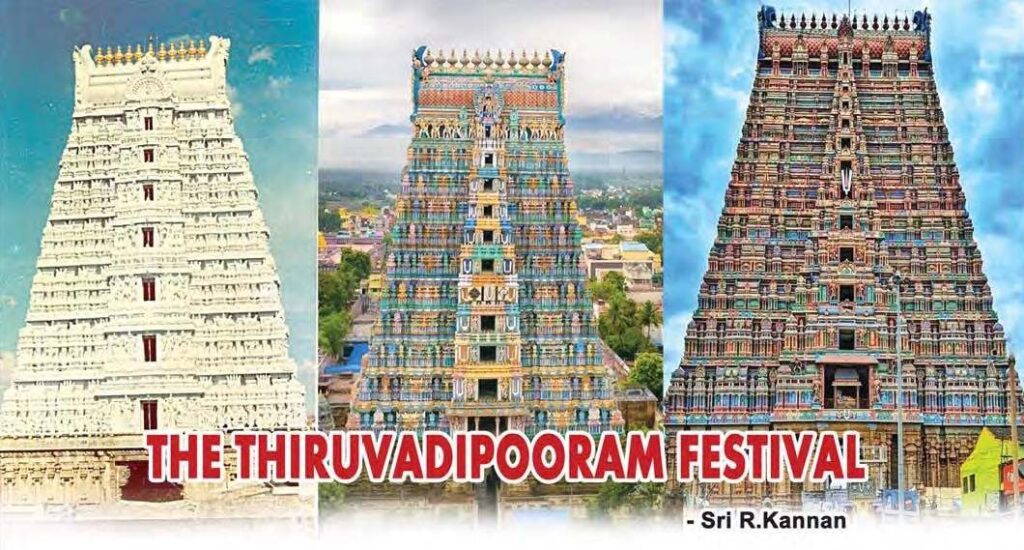Purisai Garden Ceremony On the day of Tiruvaadipuram Shaattumurai itself, Lord Venkateswara goes to Purisai Garden. On the evening of the day of Poorvaphalguni star in Kataka month, Sri Malayappa Swamy goes to Purisai Garden in a wooden Tiruchi in a wider circumambulation. There, different preparations are distributed to the devotees after offering them to Read More
Tag: Tiruvaadippooram
The Tiruvadipooram Festival
Everything about the Tiruvadipooram Festival Sri Maha Vishnu liberated Sri Bhu Devi who was kept under the ocean by the Hiranyaksha. Sri Bhu Devi was quite relieved and prayed to God to pronounce the method by which people, who were suffering in the miserable world, could be liberated from the Ocean of Samsara (just like Read More

